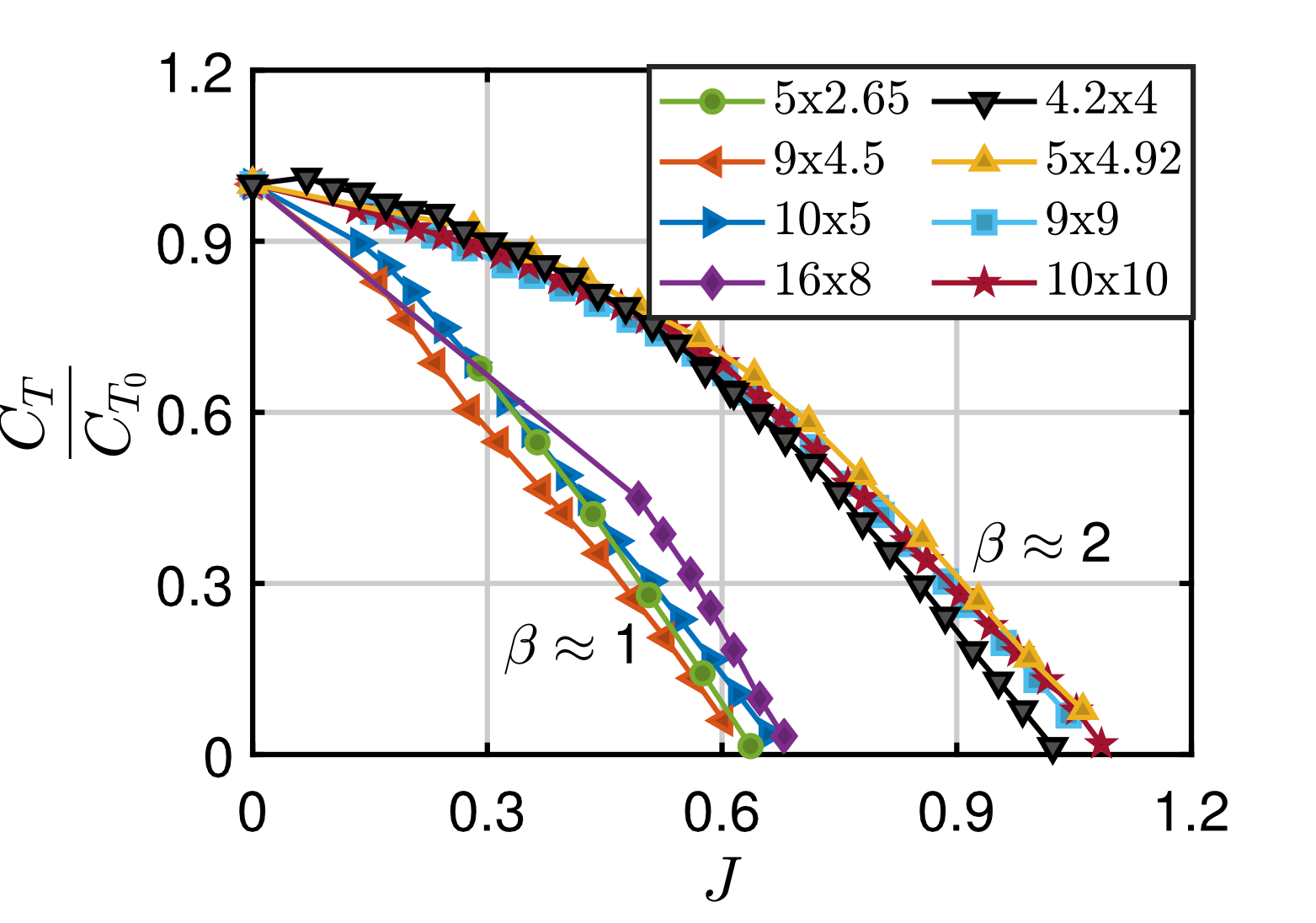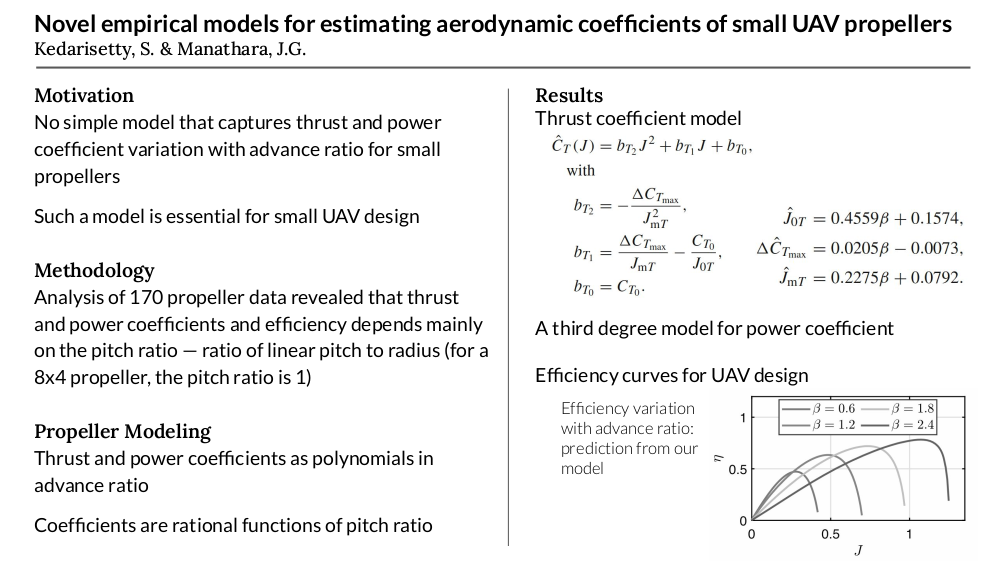
23 April 2023
Propeller selection is a crucial stage in airplane design. A poor selection can result in an inefficient design.

Designers of small UAVs are often faced with a hurdle in the propeller selection stage in preliminary design due to the lack of simple yet accurate models to estimate small propellers’ performance (thrust coefficient, power coefficient, and efficiency at various combinations of forward speeds and propeller RPMs). It might even seem impossible to have accurate propeller performance models as the performance depends on the propeller geometry (airfoil characteristics, chord length, radius, and linear pitch). And small propellers have complex geometries, the details of which are proprietary and not publically available.
Nonetheless, we could still have accurate yet simple propeller models. That is what Siddhardha and I showed in our work published recently in Aerospace Systems.
(The above AI-generated image, put in here for a visual appeal, was generated using Bing.)
By analyzing the performance data of over 170 propellers (diameters ranging from 2 to 18 inches) from different manufacturers, we found that the pitch ratio of the propeller (ratio of linear pitch to radius) influences the performance curves the most. We were surprised to see that the normalized performance curves of propellers from different manufacturers (having various diameters and pitches) but with the same pitch ratio are nearly identical, as shown in the figure below.
 Thrust coefficient variation with advance ratio (forward speed normalized by propeller RPM) for eight propellers. The hover thrust coefficient is denoted as CT0, and the diameter (D) and pitch (p) of a propeller is denoted as Dxp in the legend. Among the eight propellers, four propellers have pitch ratio of 1 and the other four have pitch ratio 2.
Thrust coefficient variation with advance ratio (forward speed normalized by propeller RPM) for eight propellers. The hover thrust coefficient is denoted as CT0, and the diameter (D) and pitch (p) of a propeller is denoted as Dxp in the legend. Among the eight propellers, four propellers have pitch ratio of 1 and the other four have pitch ratio 2.
Our analysis of small propeller performance data revealed that: (a) the thrust and power coefficient curves can be approximated as second and third-order polynomials in advance ratio, respectively, and (b) the coefficients of these polynomials depend predominantly on the pitch ratio. Leveraging this observation, we developed novel empirical relations that determine the coefficients of the polynomial performance curves as functions of the propeller pitch ratio alone.
A graphical abstract of our paper is given below.

Our estimation models not only successfully predict the propeller performance but can also be used to select a highly efficient propeller for small UAVs based on the preliminary design parameters such as required thrust and desired operating velocity. Such a design example is also given in the paper.